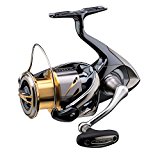An Introduction to Kelp Bass Information and Facts
Fishing is best during the months of May and October. October is considered the best month and there is no doubt that February is the worst month.
Introduction
The Kelp Bass (Paralabrax clathratus) is also known as Calico bass, California Kelp Bass, Rock Bass, Rock Sea Bass, Sand Bass, Bull Bass, Kelp Salmon, Cabrilla. The Kelp Bass is one of the most popular sport fish in Southern California. Like all bass, it is a powerful fighter and an excellent food fish.
The name Paralabrax comes for two Greek words which means, “near Labrax,” Labrax is the name of a European bass. The word clathratus refers to the blotchy markings on this fishs sides.
Each year, more kelp bass are caught in southern California coastal waters than any other fish species. Kelp bass have a long life, one of the longest of the bass we cover on this site, reaching an age of 32 years old and can grow as long as 28.5 inches/72.4 centimetres.
Catch and Release
Many anglers are switching from bait to lures to make it easy to release the fish after it is caught. As fishing has increased over the past 60 years, we encourage you to look into the catch and release program to help keep the population healthy.
No Kelp Required?
Despite their namesake, Kelp Bass are not dependant or restricted to areas that contain kelp or even be anywhere near kelp. Like all bass, they can be found near underwater structures such as sewer pipes, old tires, oil platforms, chunks of sunken street cars, rock ledges, sunken logs and other underwater structures. However, to be fair, the young fry do prefer to stick around the kelp, though no reason is known. What is known is that they can reproduce and grow to adult age without kelp.
Kelp Bass, like all other bass, will move around depending on their source of food. If food is plenty and there is good cover, there is no need to move about. However, if food is scarce, they will get up and find a new locale. And, as there is plenty of cover in the sea, they move more freely than do other bass.
Fishing is best during the months of May and October. October is considered the best month and there is no doubt that February is the worst month.
Declining Size
Kelp Bass found today are on average fewer and smaller than 60 years ago, but to blame the size reduction on global warming is incorrect. Research actually shows that the colder weather during the 70s actually caused the Bass to reduce in numbers rather than increase and the opposite occurred during the 80 and again in the last 15 years. We must also understand that the population of the United States and California in general has exploded in 60 years and that there are more anglers out for a lunker off the coast of California.
Catching Kelp Bass
While we will go into detail about the different techniques for catching Kelp Bass, there is one point you need to know when fishing for them near kelp beds. Right after they strike a lure, they run back towards the kelp beds in a dive pattern. Avoid letting them reach the kelp beds to prevent the line from getting tangled.


